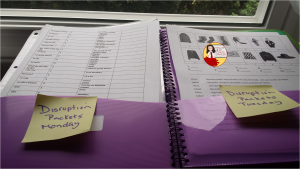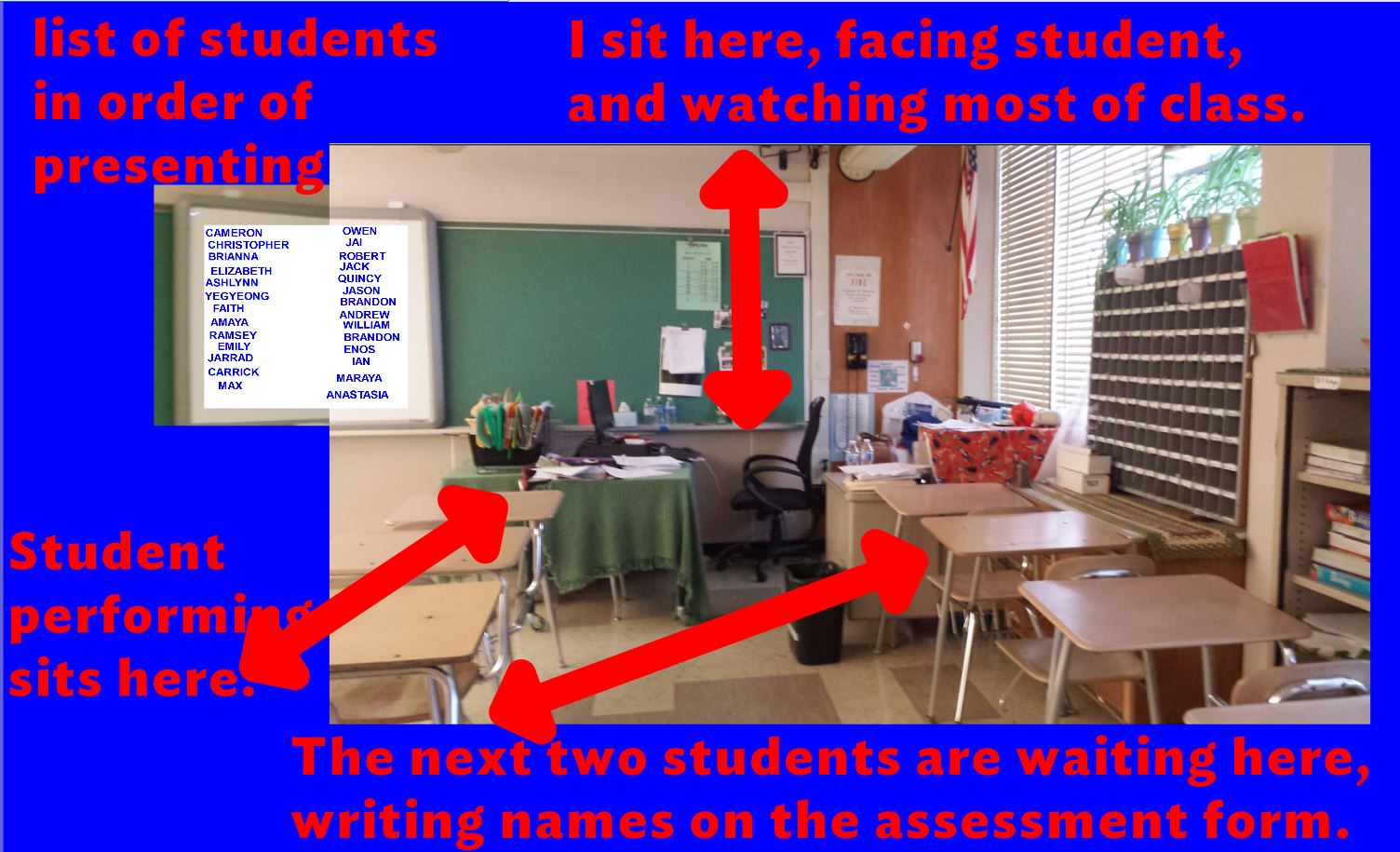Emma asked an eternal question today on a teacher FB group. She wrote, “I have one class that REALLY is difficult . . . any tips for dealing with “THAT” class, the one that never stops talking, doesn’t follow directions, and moving students doesn’t help because they will talk to everyone? It’s really discouraging.
Emma, you need more than a few tips — you need a five point action plan, and here it is!
But first, the usual suggestions/tips should be followed, and if they work, then you don’t need the action plan. The usual suggestions are:
- Call Home – find something genuinely positive to say as well as deliver the difficult message.
- Talk to other teachers who have the same students and find out if anyone is successful with them and duplicate what they do.
- Talk to you administration about them.
- Talk to their coaches.
- Use Class Dojo to track class behavior and offer a preferred reward activity for X amount of time of good behavior.
If none of these work, then it is time to start the five point action plan. This will be a lot of work at first, but it will work, and thus be worth the time invested.
Step One: Get Your Head in the Game
No teacher wants to admit this but it is true. When a class acts this way, the students are actually bullying the teacher.
I have learned a lot from my dogs. There is always an alpha dog. When we try to interfere and not let the alpha dog take charge, the other dogs are not grateful; rather they are confused and act worse until the alpha dog returns and re-establishes the pecking order.

Children need to know who is in charge and will act out if the teacher does not lead.
In my most still, reflective moments, I have to admit that when a student has more power in my classroom than I do, it is because a little part of my psyche agrees with the student that I don’t have to be respected.
I can blame that on my family legacy of beating us as kids, and most times I have vanquished it.
Sometimes it crops up when:
- I am stressed with a life event.
- When there is a really bad combination of students who should never be scheduled together, and I am powerless to make changes because Spanish just isn’t perceived to be that important.
I have a friend who let students talk over and walk over her because she is a French teacher and needs her enrollment. Turns out, only when she took charge did she retain her enrollment. You need to fearlessly address what part of you gives them permission to have more power in the classroom and deal with it.
You need to talk to yourself and tell yourself: I am the adult in charge.
I will be obeyed.
I will not let children take away from those who are here to learn.
When students whine, it is not a moral judgment about me, but more about their own teenage angst. I will not feed their whining and let it grow by responding to it.
I deserve respect and if I don’t get it, that child will be removed for the rest of the period. My other students deserve respect.
There is zero tolerance for talking over me; it undermines my authority and I DO NOT DESERVE IT AND WILL NOT TOLERATE IT.”

Scream it to yourself on your way to school. Buy into it. Believe and live it. (Every teacher has to find his or her own teaching voice. Take my suggestions and change them to reflect your teaching voice, or if you are unhappy with your current teaching voice, borrow mine until you are on firmer ground.)
Step Two: Enlist Your Tribe to Help You
Line up a few other teachers willing to help you. Explain to them that you need them to let the offending student sit in the back of their class and work on their packet. My 8th graders hate when they are sent to a 7th grade class as it makes them look bad. Awww.

Have their phone numbers on a post-it by your phone. If they can be the cool teachers or the respected coaches, even better. You must have worksheet packets lined up for offending students.
Yes, this means 4 or 5 packets each day that relate to the class material so you can’t be accused of giving unrelated busy work.
Step Three: Prepare, Prepare, Prepare
You are about to make a big change and you must have your homework done.
You must plan the next week’s lessons minute by minute so that there are minimal transitions.
You must have an extra ten minutes of activities to make sure there is no down time. I would avoid any competitive games as when this kind of class competes it opens the door for trash talk and over-the-top talking.
I suggest you make a Daily Tech Guide (“DTG”) in either PowerPoint, Google Slides or your interactive board’s software. You need to vary the activities, embed the videos, embed the songs, insert pictures of the pages in the text, insert worksheet with the answers, everything so that there are no transitions.

Invest in a remote presentation device or wireless mouse so you can walk around the room and stand next to the trouble-makers as you click through the lesson. If you are pressed for time, these lessons are available from my store. If you want to learn more about making DTGs, you can get a free template without musical videos on the first day when you join my challenge or read my blog on Just Prep During Your Prep
If you are still doing paired practices they are not to choose their friends, You choose their partners because you are in control.
Develop signals – my DTGs are sprinkled with “¿listos?” — ready? I say it and they all answer. If some are off task I walk over to them and repeat it and the whole class answers. Then zip into the next activity. Getting their attention is easier than having them be quiet. So train them to do this.
Step Four: Give Your Best Heart-to-Heart talk (or steal mine, changing “father” to “grandfather” or ‘great-grandfather” if it fits better.)

Tell your students, “You need to hear my story.”
In 1921, on my father’s 6th birthday he chased a ball into the street and was run over by a truck. No one stopped to helped him because cars were still so new that only the rich had them and they didn’t want to dirty their cars up. The town drunk found him and brought him to the hospital. They stitched his face up for his wake, in order to lessen his mother’s sorrow, never believing he would awaken from his coma.
His father kept vigil for seven days and did not shed one tear. My father never saw his father cry until he was 15. He found his father weeping that he had been a horrible father. My father asked him why and my grandfather told him “A guy at work was walking with his son past a construction site and realized some bricks were falling right in front of his son and he yelled ‘halt’ and his son halted immediately and the bricks just grazed his toes. If I had yelled halt, you would have argued with me and be dead. I didn’t raise you well enough to keep you safe.”
I have been reading the book on Columbine High school and have been impressed that many students were lead to safety because they listened to a teacher or principal.
I am upset with myself because you don’t listen to me and if anything were to happen, I couldn’t protect you.
I was talking to my brother who hires students to work in his business, and he said if a high school student isn’t trained to show interest, he won’t hire him – and he pays the highest wages.
So by giving you permission to talk over me, I am also neglecting to help you learn how to behave around authority figures and it might cause you to not get a good job or to have the police misunderstand your attitude.
I learned that teachers who train their students with SLANT find that their students do not have this problem. So going forward, to keep you safe, you must not talk when I am talking and you must stop talking when I tell you to do so. Also when I say “slant”, you need to
- Sit up
- Lean forward
- Ask questions about the topic
- Nod your head
- Track the teacher with your eyes (move around the room when practicing this)
If you practice this, you will get a better job, and be surprised that adults believe you are really paying attention, even if you aren’t. We are going to practice this and you should try this elsewhere and let us know the results.”
Then, start practicing it with the students and start your lesson with the most engaging activity. Remind them to slant when you sense they are fading.
Practice the signal to be quiet. If someone doesn’t comply and is blatantly disrespectful, go to step five.
Step Five: Show You Mean It.
When someone disobeys, you call the teacher on the list but don’t say the teacher’s name. “Hi this is Ellen Shrager, I am sending X to you. Thanks.” Go out into the hall and signal the student to join you. (Out in the hall is better and the class will quiet down to hear what you are saying.)

Give the packet to the student and neutrally send him to the other teacher for him to complete the work. “Today isn’t working for you, so you need to finish the class work with Coach Nopardons. I hope tomorrow is better for you.”
No threats, no discussion, the kid is gone for today. Continue with class. Do not let them talk over you. Repeat with a different teacher if necessary. After a week they will know you mean business.
You do not deserve that kind of treatment. Emma, your genuine angst motivated me to write my first blog.
Let us know what you decide to do and if it works for you.









